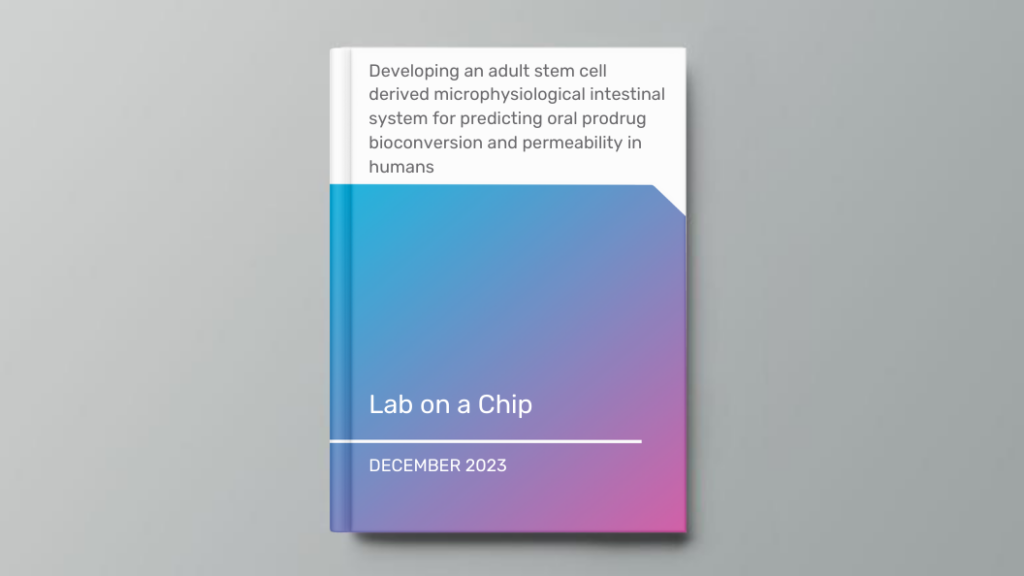Organ Model: Intestine (Duodenum)
Application: ADME-Tox
Abstract: Microphysiological systems (MPS) incorporating human intestinal organoids have shown the potential to faithfully model intestinal biology with the promise to accelerate development of oral prodrugs. We hypothesized that an MPS model incorporating flow, shear stress, and vasculature could provide more reliable measures of prodrug bioconversion and permeability. Following construction of jejunal and duodenal organoid MPS derived from 3 donors, we determined the area under the concentration-time (AUC) curve for the active drug in the vascular channel and characterized the enzymology of prodrug bioconversion. Fosamprenavir underwent phosphatase mediated hydrolysis to amprenavir while dabigatran etexilate (DABE) exhibited proper CES2- and, as anticipated, not CES1-mediated de-esterification, followed by permeation of amprenavir to the vascular channel. When experiments were conducted in the presence of bio-converting enzyme inhibitors (orthovanadate for alkaline phosphatase; bis(p-nitrophenyl)phosphate for carboxylesterase), the AUC of the active drug decreased accordingly in the vascular channel. In addition to functional analysis, the MPS was characterized through imaging and proteomic analysis. Imaging revealed proper expression and localization of epithelial, endothelial, tight junction and catalytic enzyme markers. Global proteomic analysis was used to analyze the MPS model and 3 comparator sources: an organoid-based transwell model (which was also evaluated for function), Matrigel embedded organoids and finally jejunal and duodenal cadaver tissues collected from 3 donors. Hierarchical clustering analysis (HCA) and principal component analysis (PCA) of global proteomic data demonstrated that all organoid-based models exhibited strong similarity and were distinct from tissues. Intestinal organoids in the MPS model exhibited strong similarity to human tissue for key epithelial markers via HCA. Quantitative proteomic analysis showed higher expression of key prodrug converting and drug metabolizing enzymes in MPS-derived organoids compared to tissues, organoids in Matrigel, and organoids on transwells. When comparing organoids from MPS and transwells, expression of intestinal alkaline phosphatase (ALPI), carboxylesterase (CES)2, cytochrome P450 3A4 (CYP3A4) and sucrase isomaltase (SI) was 2.97-, 1.2-, 11.3-, and 27.7-fold higher for duodenum and 7.7-, 4.6-, 18.1-, and 112.2-fold higher for jejunum organoids in MPS, respectively. The MPS approach can provide a more physiological system than enzymes, organoids, and organoids on transwells for pharmacokinetic analysis of prodrugs that account for 10% of all commercial medicines.

